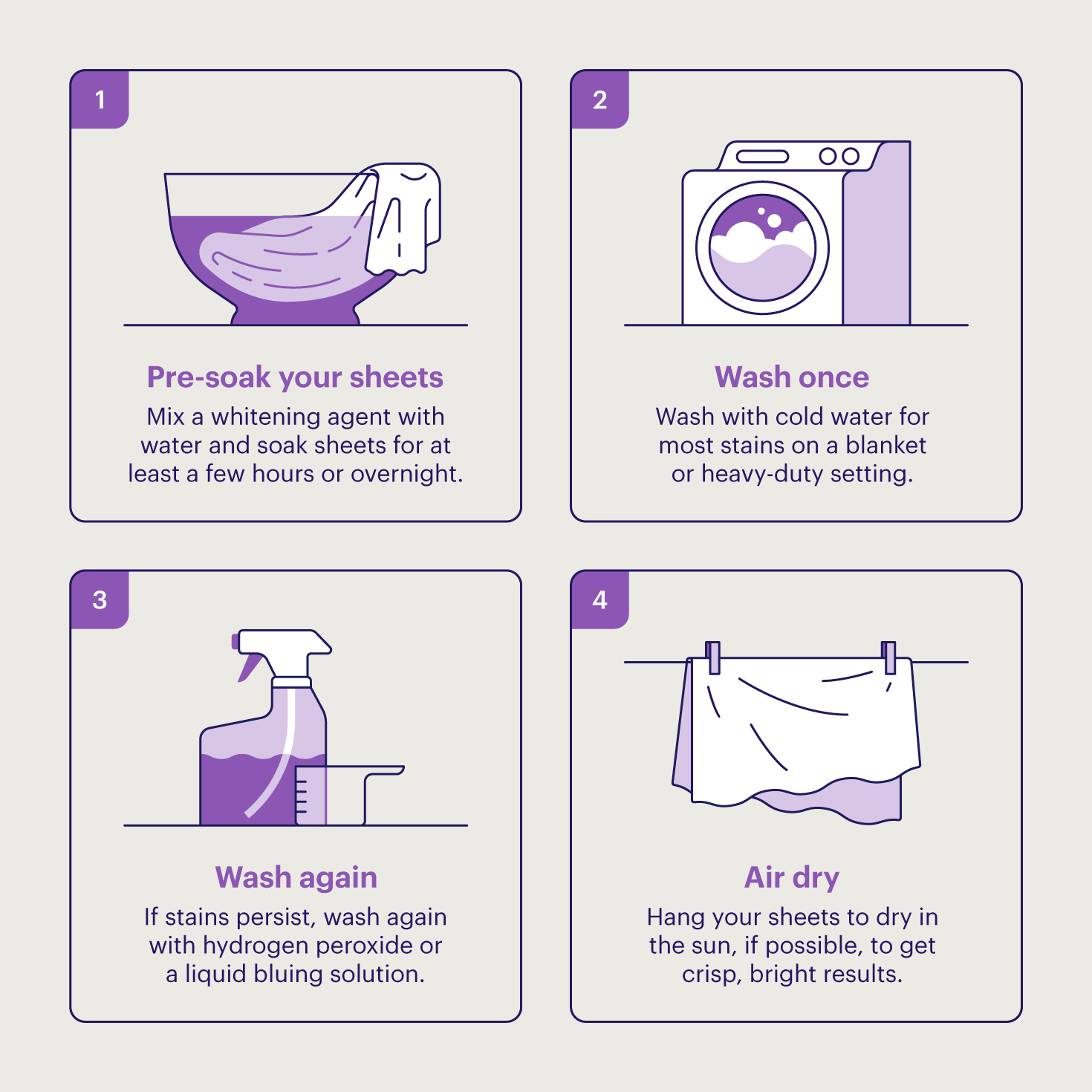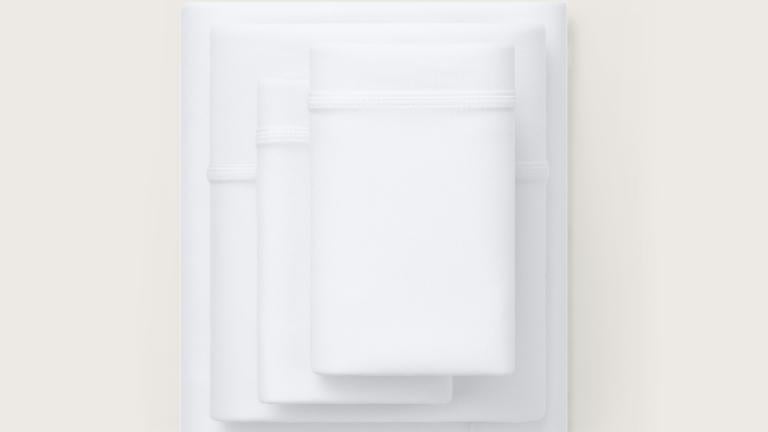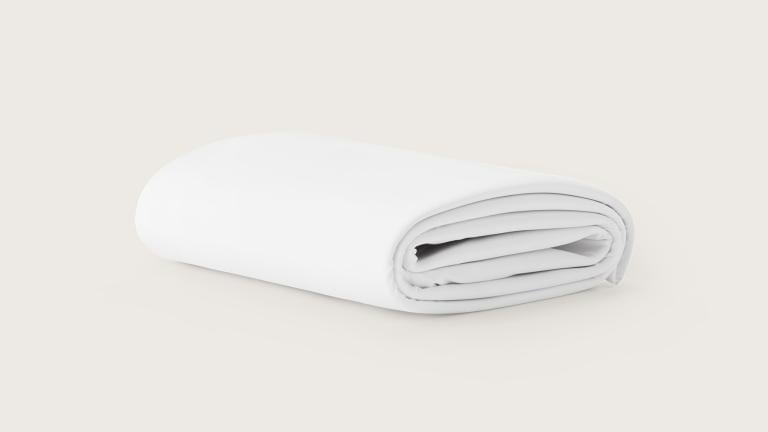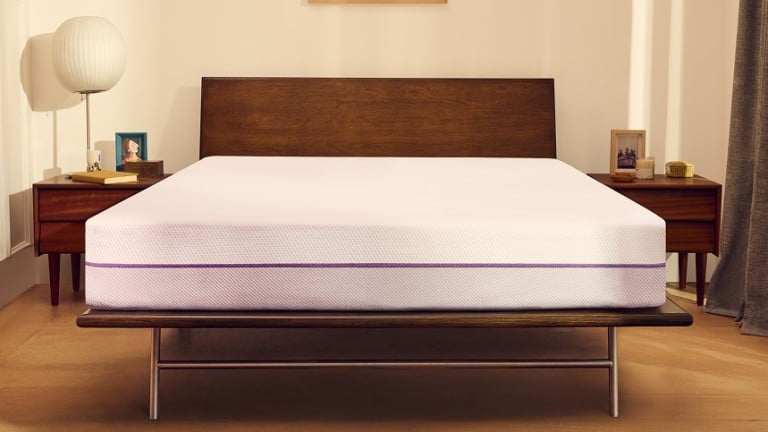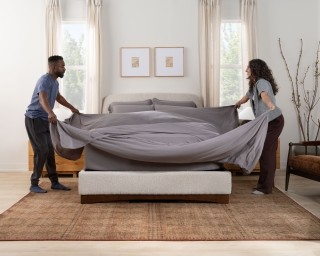
How To Whiten Sheets in 4 Steps + Tips To Keep Them Clean
Key Takeaways
- The best way to whiten yellow sheets is by pre-soaking them, washing them once or twice, and letting them air dry in the sun.
- Try using baking soda, vinegar, lemon juice, or liquid bluing separately to whiten your sheets.
- Prevent discoloration by changing your sheets once a week, spot-cleaning spills right away, and washing your bedding carefully.
Fresh, clean sheets feel amazing, but not everyone knows how to clean them properly. If your white sheets have started to yellow, you may not need to think about choosing new sheets just yet. We'll cover some easy tips and best practices for how to whiten sheets and keep your bedding clean and fresh.
1. Pre-Soak Sheets With a Whitening Agent
Immerse your sheets in a basin full of warm or hot water. Add between half a cup and 1 cup of your whitener of choice for each gallon of water and let your sheets soak for an hour. Depending on what you have available, the type of sheets you use, and your personal preference, there are different whitening agents you can use.
If your sheets are starting to show their age, and you’re struggling to get out pesky stains, it may be time to replace your bedding. Purple’s sheets are designed to keep you comfortable and cool so you can sleep more soundly.
2. Wash Them Once
Toss your sheets in the washer and press the blankets setting. Add your preferred whitener into your drum. Avoid using fabric conditioner with a whitening agent, since it’s known to build up in dispensers and, when combined with lint and other debris, can leave brown, squishy flakes of residue all over your clothes and linens.
3. Wash Them Again
If your sheets still look yellow or have a persistent smell, it’s best to run another wash cycle. This time, add hydrogen peroxide or diluted liquid bluing to your drum or bleach dispenser. No need for detergent this cycle.
4. Air Dry Your Sheets
Skip the dryer and hang-dry your clothes if possible. The sun is an excellent whitener and deodorizer. Leaving sheets out to dry in the sun is the most cost-effective way to getting bright, crisp white sheets again.
How To Whiten Sheets Without Bleach: 8 Alternatives
Crisp white sheets may elevate the look of your bedroom, but without proper care, they can easily go from bright and white to drab and dingy. Discoloration can happen for several reasons, such as sweat and oil stains, bed-wetting accidents, beverage spills, and muddy pet paws.
Before you reach for the bleach, remember that chlorine bleach can turn white sheets yellow and damage your fabrics. Chlorine bleach can also burn your skin and irritate your eyes and lungs. If you want to know how to brighten white sheets, here are eight safer and more effective whitening agents:
- Baking soda: Baking soda is a natural home remedy often used to deodorize mattresses and anything else with a nasty odor. You can also whiten sheets with baking soda to get hard stains out, brighten fabrics, and soften sheets — making your bedding and mattress more comfortable.
- Vinegar: Distilled white vinegar contains acetic acid, an active ingredient in many skin and teeth whitening products. You can give dingy fabrics a facelift and make them look fresher by whitening sheets with vinegar. Vinegar and baking soda are great for cleaning pee out of mattresses and sheets; the vinegar dissolves the stain while baking soda neutralizes the ammonia-like odor.
- Lemon juice: Lemons contain citric acid, which works as a bleaching agent to lighten stains. Be careful when using lemon juice on colored fabrics, though, as it fades colors.
- Hydrogen peroxide: Hydrogen peroxide can be used as a gentle bleaching agent, though it’s best for removing odors. Avoid mixing hydrogen peroxide with other cleaning agents by using each product separately according to instructions.
- Borax: Borax, also known as sodium borate, is an effective laundry booster. Soak stained sheets overnight in a borax solution for best results. Borax is a relatively safe compound that doesn’t irritate the skin, though ingesting large doses can cause gastrointestinal discomfort.1
- Liquid bluing: Liquid bluing is a suspension of fine blue iron powder and water that is used to refresh yellowing and off-white fabrics. Bluing is basically an imperceptible blue dye that balances out the color of yellowed fabrics so that we perceive them as white again.
- Cornstarch: Cornstarch is another inexpensive home remedy for getting spills and stains out of sheets and clothes. Dry cornstarch can soak up spills before stains set in, and a cornstarch paste can remove stains from upholstery.
- Oxygen bleach: Not to be confused with chlorine bleach, oxygen bleach is a better option for washing sheets. Make sure to grab oxygen or “color-safe” bleach — a solution of sodium carbonate and hydrogen peroxide. Unlike chlorine bleach, it does not cause colored dyes to fade away. Plus, it simply turns into water and oxygen when broken down.
How To Use Whitening Agents
When working with any kinds of chemicals or bleaching agents, it’s important to follow instructions and pay attention to product labels to avoid irritation or chemical reactions. To whiten sheets, here’s how you can use the aforementioned whitening agents:
Whitening agent | Directions | |
Baking soda | Add half a cup of baking soda into your washing machine drum along with your choice of laundry detergent, and wash as usual. | |
Vinegar | Add half a cup into the final rinse or pour it directly into the fabric softener dispenser of your washing machine. | |
Lemon juice | Add about half a cup to a large bucket of hot water, and pre-soak sheets overnight. Wash as usual in the washing machine the following day. If your machine has a bleach dispenser, you can also pour lemon juice directly into it. | |
Hydrogen peroxide | Add baking soda or another whitening agent in your first wash cycle, then add 1 cup of hydrogen peroxide to the bleach dispenser before running a second cycle. | |
Borax | Add half a cup of borax to 1 gallon of water, and leave sheets to pre-soak overnight before machine washing the following day. | |
Liquid bluing | Dilute a teaspoon into 1 gallon of water. Make sure not to add bluing straight into your fabrics as this can stain them. Mix the solution into your washing machine, add your laundry detergent of choice, and wash. | |
Cornstarch | Lay your sheets out on a flat surface, sprinkle cornstarch over the stain, and let it sit for about an hour before brushing or vacuuming the cornstarch and blotting any residue with a damp cloth rag. For older stains, make a thick paste of cornstarch and water, rub it into the surface, and let it dry before vacuuming it up. | |
Oxygen bleach | Add half a cup into your washing machine drum, and wash with detergent as usual. To flush out any lingering bleach smells, run an additional cycle with the same amount of laundry detergent you would use for a regular cycle. | |
How To Keep White Sheets White
Over time, you may find yellow stains on your mattress and sheets, and even if they don’t smell bad or affect your sleep quality, learning how to whiten sheets and prevent yellowing can keep your bedroom feeling clean and fresh.
Whitening agents and thorough cleaning can save you in a pinch, but you should also make sure to follow these best practices to keep your sheets in the best shape.
Store Bedding Properly
Keep your sheets in a dark, dry place, ideally in a storage bag or spare pillowcase, to protect them from light, dust, mold, and messes. Storing sheets in plastic or cardboard could cause moisture to build up and may result in discoloration.
Change Sheets Regularly
If you sleep in your bed every night, you should change and wash your sheets once a week when possible. Not only is replacing your sheets once a week more hygienic, but it also maintains their longevity. Always have more than one set of sheets on hand, especially if you air dry your bedding (as you should).
Avoid Eating in Bed
While there are several foods you can eat to help you sleep, you shouldn’t enjoy them while lying in bed. Spilled food can cause stubborn, smelly stains, especially if you don’t spot-clean them right away.
Freshen Up Before Bed
Sebum (the oil that builds up on your face), sweat, and makeup can all do a number on white sheets and pillowcases. Always freshen up, or at least wash your face, before heading to bed. This will save you the trouble of spot-cleaning oil, sweat, and hard-to-remove makeup stains from your bedding.
Pre-Soak Sheets Before Washing
Pre-soaking sheets allows stains to lift from the fabric, making it easier to get them out completely in washing. Pre-soaking sheets with certain whiteners, such as vinegar or baking soda, can also soften your fabric.
Separate Lights and Darks
Yes, separating your lights and darks can be time-consuming, but one stray red sock can mean the difference between classy white sheets and bubblegum pink beddings.
If you’ve made the mistake of mixing your lights and darks, you can get dye transfer stains out of sheets with oxygen bleach or white vinegar.
Choose Water Temperature Carefully
Don’t know what temperature to wash sheets and remove laundry stains? Cold water is typically your best bet. Blood stains, toothpaste, urine, and highly pigmented foods like soy sauce and mustard react best to cold water. Hot water might set stains into fabrics, making it even harder to rinse them out completely.
But if you’re cleaning things like wine, chocolate, coffee, fabric dyes, and dried, untreated stains from ages ago, hot water is your best bet.
Clean Up Spills and Stains Immediately
This is another tip that should go without saying. If possible, never leave stains to dry on white sheets. Doing so will just make it harder to remove them later on.
Cleaning up fresh stains should only take a few minutes to two hours tops. Urine stains may require some overnight treatment, but it beats having to reapply your stain-removing remedy over and over again.
Keep Your Sheets Clean and Fresh
That’s everything you need to clean your white sheets and keep them looking bright and new for as long as possible! By following our simple tips, you can ensure that your bedding will always look its best.
Don’t forget — if, at any time, you start to see a dingy or yellowing effect begin to form on your sheets, act fast! The sooner you address the problem, the easier it will be to correct.
Looking for crisp, cotton sheets that are easy to care for? Purple’s innovative stretchy sheets are machine-washable and able to withstand a low tumble dry.
FAQ
To whiten your sheets, follow these steps:
- Soak them in a solution of water and a whitening agent like baking soda or vinegar for a few hours or overnight.
- Wash in cold water with laundry detergent.
- If your sheets are still yellow, stained, or smelly, wash again, adding hydrogen peroxide instead of detergent.
- Hang your sheets to air dry.
Hotels typically use a combination of high-quality linens, industrial cleaning products, and standardized practices to keep their sheets white, crisp, and clean. Typically, this includes:
- Heavy-duty, fabric-safe detergents
- Non-chlorine bleach
- Lengthy wash cycles
Yes, OxiClean can be used to whiten yellowed sheets. It’s important to follow the instructions on the label; while OxiClean is not chlorine bleach, you should be careful when using any chemical cleaning products in your home.
More To Explore
Level up your sleep routine with our most-loved products.


